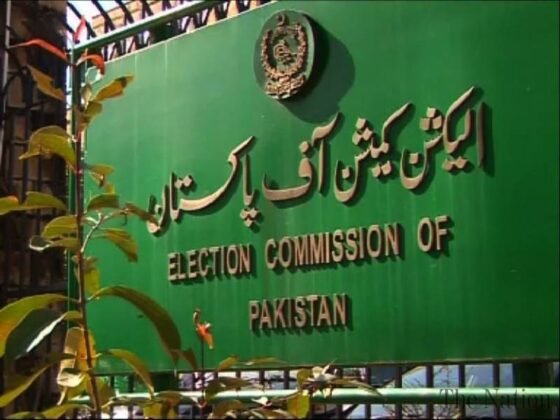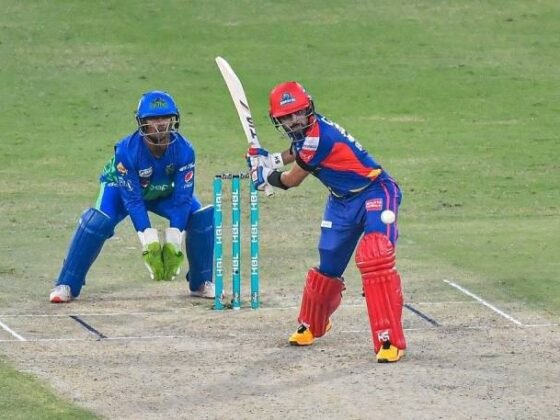Causes for brand spanking new infections, embrace the dearth of political will and the stigma connected to the illness.
By: Faiza Ilyas and Ikram Junaidi
KARACHI/ISLAMABAD: In October 2016, it was reported that greater than 50 sufferers on renal dialysis on the Chandka Medical School Hospital (CMCH) in Larkana had contracted the Human Immunodeficiency Virus (HIV).
The Journal of Pakistan Medical Affiliation put the whole determine at 56. It was additionally learnt that 36 sufferers had contracted HIV and hepatitis C, whereas two examined constructive for hepatitis B.
Since, seven sufferers have died resulting from issues over the previous ten months.
Inquiries into the CMCH incident reveal that the majority sufferers had a historical past of a number of blood transfusions carried out on the hospital; and that non-public blood banks within the neighborhood function with out adhering to high quality assurance strategies.
Sources on the hospital — which additionally has an HIV/AIDS care and therapy centre — clarify that the dialysis unit previous to the incident didn’t have a laboratory to display sufferers.
Furthermore, hospital workers relied on doubtful lab stories [for blood tests] that sufferers introduced with them.
Regrettably what might need been a chance for motion was one other episode of official indifference.
When Daybreak contacted Dr Hola Ram, in control of the HIV/AIDS care and therapy centre at CMCH, he confirmed, “The entire quantity [of infected patients] was 50; three to 4 sufferers refused to obtain antiretroviral remedy, whereas the remainder are on HIV therapy.”
Nonetheless, final yr when the inquiry committee was writing its report, 26 sufferers have been contaminated with HIV, he mentioned.
Furthermore, two out of three blood banks sealed after this incident have been later declared ‘protected’ and allowed to function by the Sindh Blood Transfusion Authority (SBTA).
Nonetheless, the CMCH, a 1,500-bed tertiary care hospital nonetheless doesn’t have a blood financial institution. Sources at CMCH additionally advised Daybreak that the sale of blood by injecting drug customers continues unabated within the district.
Donors are clandestinely approached by brokers at night time largely to for pressing blood donations.
Months into the incident suggestions made by the inquiry committee in October 2016 stay unimplemented, together with the appointment of a nephrologist on the hospital and the curbing of sub-standard laboratories.
Additionally, sufferers who contracted HIV at CMCH complain that they haven’t been compensated by the federal government.
“The incident introduced a nasty identify to the federal government. Worse nonetheless, all these liable for the HIV outbreak — officers from the Sindh AIDS Management Programme (SACP), the SBTA and even the medical superintendent of CMCH — have been a part of the inquiry committee,” says a well being skilled on situation of anonymity.
Daybreak repeatedly contacted the SACP supervisor and the SBTA secretary for his or her feedback however each didn’t reply.
An investigation report into the Larkana incident by the Nationwide Aids Management Programme — which reviewed HIV/Aids therapy centre knowledge at CMCH from February to August 2016 — states that whereas a median of 29 new HIV sufferers registered every month at this facility the ratio of those that sought therapy was recorded at 19.four per cent.
Larkana has witnessed rising numbers of HIV instances since 2003 when the primary outbreak amongst injecting drug customers was reported.
At the moment, a survey cited 17 out of 175 injecting drug customers as HIV constructive.
Sure various components have additionally contributed to the rise in HIV in Larkana, together with its lively inhabitants of intercourse staff, particularly male-to-male intercourse staff, and injecting drug customers.
It’s unlucky that in a province the place virtually half of the nation’s HIV infections have emerged, sufferers are compelled to journey to Karachi that has one HIV referral laboratory.
“The Larkana incident is reflective of how HIV is spreading within the nation, particularly the place regulatory well being management mechanisms and therapy are absent.
And, whereas, unscreened blood transfusions and the dearth of an infection management practices is widespread, there may be nonetheless silence on this,” an infectious illness skilled explains.
Karachi is recognized as one of many prime cities globally with an increase in HIV prevalence
In keeping with medical specialists, other than the truth that HIV an infection takes a protracted whereas to point out indicators, physicians’ lack of know-how, the social stigma connected to the illness and the reluctance of presidency officers to doc precise numbers of contaminated individuals are contributing components that veil the reality in regards to the rise of HIV.
In different phrases, the Larkana incident gives some clarification for the rise in HIV amongst communities most in danger.
New HIV infections
With about 133,529 individuals estimated to have contracted HIV, Pakistan is considered one of few regional international locations to witness an rising variety of instances.
Hopes for efficiently tackling the illness are overshadowed by extraordinarily low HIV screening and therapy protection, and rising numbers of latest instances.
With the nation’s HIV/AIDS management programme about to obtain a renewed three-year (2018-2020) $35 million grant from the International Fund for Aids, TB and Malaria (GFATM) — a financing partnership group — these registered as HIV constructive should be ensured entry to free treatment and therapy choices.
Antiretroviral remedy (ART), a life-saver, stops the virus from making copies of itself and attacking the physique’s immune system.
“The explanations for brand spanking new infections, embrace the dearth of political will, bureaucratic hurdles, the stigma connected to the illness, the absence of therapy and technical services and belief deficiency [between implementing stakeholders],” explains Dr Baseer Achakzai, the supervisor of the Nationwide Aids Management Program (NACP).
Extra alarmingly, the Built-in Organic and Behavioural Surveillance for 2016-2017 by NACP carried out in 23 cities/cities exhibits that the excessive prevalence of HIV is not confined to injecting drug customers and transgenders, however, has taken the type of an epidemic in different high-risk teams as effectively – prisoners, males having intercourse with males and male intercourse staff.
This enhance may also be traced to rising numbers amongst different segments, comparable to feminine intercourse staff, migrant staff coming back from the Center-East in addition to these individuals contracting HIV by means of unsafe blood transfusions and drips.
With therapy protection remaining very low, the essential query is whether or not donor cash is equitably distributed.
“The way in which the HIV/AIDS programme is at the moment administered within the nation is a sheer waste of cash,” says former SACP director, Dr Sharaf Ali Shah, who heads the Bridge Consultants Basis, an implementing accomplice working with NACP and New Zindagi Belief (NZT) – a non-governmental organisation serving as a precept GF grant recipient since 2011.
Globally, HIV management programmes are built-in with different healthcare methods. Referring to the dearth of free drug rehabilitation centres in Karachi, he explains, “this extremely marginalised group of drug customers on the core of the HIV epidemic has critical psychological and social points.
Should you don’t handle them, they received’t adhere to therapy and that may result in relapse, resistance towards the medicine.
In addition to, wives and companions can get contaminated. We additionally require correct services for detoxing remedy.”
With Karachi recognized as one of many prime cities on the planet with a worrying rise in HIV prevalence, it’s essential to manage the illness earlier than it spreads additional.
Excessive-risk inhabitants teams
Sexual transmission amongst males will account for the majority of latest HIV infections, if intervention stays at present ranges, in keeping with UNAIDS.
Furthermore, while feminine intercourse staff have the bottom prevalence amongst key inhabitants teams (2.2pc), their fee is rising on the quickest tempo (up by 2.67laptop from zero.6pc in 2011).
Transgender individuals have the best general HIV prevalence fee (7.1pc) amongst key populations for whom sexual transmission predominates.
The very best prevalence fee for transgenders was reported from Larkana (18.2pc) adopted by Bannu (15laptop) and Karachi (12.9pc).
In Khyber Pakhtunkhwa (KP), for instance, Daybreak has learnt that the HIV management programme will start offering counselling, testing companies and therapy to transgenders in July.
In keeping with Dr Ayub Roz, head of KP’s HIV management programme, Rs 200m is out there for preventive measures and therapy for transgenders.
With an estimated 9,000 HIV sufferers, lack of funding had halted the KP Aids management programme.
Though entitled to grant cash from the NACP, KP had failed to fulfill important necessities – together with submitting a PC-I for tasks, says Dr Achakzai, although this yr funding shall be disbursed after GF approval, he confirms.
With Rs300m for the HIV programme, solely Rs30m was launched in 2016-17 – cash spent on workplaces and hiring workers, say sources.
In the meantime, the federal government’s incapacity to persuade stakeholders to permit the usage of opioid substitution remedy, a confirmed intervention allowed by the World Well being Organisation and a essential a part of the detoxing remedy for medicine customers with HIV poses one other barrier.
The place is International Fund help going?
Since 2000, GF has contributed 80laptop of funding for the nation’s HIV program whereas the federal government gives 20laptop.
In keeping with Tariq Zafar, the chief director of NZT, the belief receives round $5m yearly ─ it has obtained $17.45m over the previous three years.
GF has ranked the belief at A2 stage which implies close to 100laptop, he says.
Explaining the process to qualify for a grant, Dr Achakzai says GF kinds a rustic coordination mechanism (CCM) together with illustration from involved ministries, departments and civil society.
“Idea notes are despatched from the federal government and personal organizations (NZT) by CCM to GF for approval. NACP transfers funds it receives to the provinces,” he explains.
Equally, NZT disburses GF cash to sub-recipients – three in Sindh, two in Balochistan and equally, personal not-for-profits are offered funding in Punjab and KP.
With out a GF consultant in Pakistan, the United Nations Workplace for Challenge Providers (UNOPS) serves because the native fund agent.
In keeping with Dr Achakzai, it verifies accounts and stories to GF each six months.
“Now we have noticed that the native fund agent raises objections relating to NACP accounts, however ignores discrepancies in personal sector accounts,” he claims.
“Typically the NACP will face objections over a transaction of Rs 1,300, for instance, however payments from the personal sector that quantity to Rs 1.3m with the identical objections are cleared,” he provides.
Sources at NACP additionally advised Daybreak that idea notes by NZT are forwarded to GF with out detailed analysis.
On his half, Mr Zafar explains that “though GF sends us cash, our idea notes are authorised by the secretary for the ministry of nationwide well being companies.”
He says quarterly audit can also be carried out, claiming that as a result of NZT conducts an in depth audit of sub-recipients that “they continue to be aggravated with us.”
Between July 2014 and December 2016, GF contributed $9.zero23m for Pakistan’s HIV programme.
Out of which $1.3m was spent in Punjab, $zero.84m in Sindh, $zero.43m in KP and $zero.36m was spent in Balochistan. Furthermore, $zero.2m was additionally given to the Affiliation of Individuals Residing with HIV which has labored in collaboration with the NACP.
Regardless of these allocations, insider sources say it’s a tough activity to get the federal government to supply funding to the provinces.
And KP’s dormant HIV management programme serves for example.
Apparently, although Dr Achakzai says the HIV program has by no means had monetary hiccups, he admits that authorities funding is uncommon.
“It’s embarrassing to disclose, however it’s a indisputable fact that NACP workers has not obtained salaries for the final 10 months as a result of funds couldn’t be launched. There’s political will to eradicate polio, however, sadly there may be none to forestall and deal with HIV. Though HIV is an even bigger well being disaster in comparison with polio on this nation. If at any time GF stops funding this programme, inside a couple of weeks, we is not going to have a single pill for HIV sufferers,” he explains.
Extra reporting by Ashfaque Yusufzai in Peshawar and M B Kalhoro in Larkana.
Drug customers with HIV in Pakistan are left to fall by the wayside
By: Faiza Ilyas
Struggling a number of relapses after present process costly therapies for drug habit at Karachi’s personal healthcare services, Sohail travelled for therapy to an antiretroviral remedy (ART) adherence unit in Islamabad.
The power is run by New Zindagi Belief (NZT) — a healthcare organisation working with communities affected by drug use and HIV/AIDS — and established with help from the International Fund (GF).
Sohail was registered with Pakistan Society (PS) — a non-governmental organisation centered on drug rehabilitation in Karachi — that receives funding from NZT. The organisation liaised with NZT for his rehabilitation in Islamabad.
Final Could, tragedy struck the household after they have been knowledgeable of Sohail’s demise, two days after he had left for Islamabad.
“My brother’s extended drug habit adopted by his HIV constructive standing continuously frightened me on the time, however now I really feel responsible for sending him to a different metropolis for therapy. Even after a yr, I’ve not been advised what induced his sudden demise,” Faisal Ali tells Daybreak.
Although his brother was bodily weak, he was declared match to journey by a physician at NZT’s Malir centre in Karachi.
“Being a drug consumer, Sohail was frightened about travelling with out medicine. However workers on the NZT centre mentioned there was no want to fret,” he says.
Sohail left for Islamabad with different sufferers in a NZT car on a Saturday morning. On Monday afternoon, Faisal obtained a name that his brother had died.
“He was my solely brother. The household was shocked and blamed me for his demise, although I attempted to pacify them by mendacity that he had died of coronary heart failure. I obtained his lifeless physique the subsequent day in Sohrab Goth,” he says.
Sohail’s case shouldn’t be an remoted incident. Sources knowledgeable Daybreak that no less than six sufferers have died over the previous yr alone, together with three throughout therapy on the NZT adherence unit in Islamabad.
Furthermore, the Bridge Consultants Basis (BCF), one other not-for-profit, has reported the demise of two sufferers registered with them – each sufferers have been HIV constructive and drug customers and died whereas travelling to an NZT facility in Islamabad.
As sub-recipients of GF grants, each PS and BCF implement the HIV/AIDS programme by means of the Nationwide AIDS Management Programme (NACP) and NZT.
Sohail, who developed critical withdrawal signs, reportedly died quickly after he arrived on the adherence unit.
“We don’t know precisely how these sufferers died, since their demise certificates obtained from NZT merely word that they have been introduced lifeless to PIMS Hospital in Islamabad,” says Ahzar Hussain, a programme supervisor at PS.
Though the organisation expressed its issues in an electronic mail to NZT, GF, UNAIDS, the Sind AIDS Management Programme and NACP, they’ve but to obtain a response, he says.
The e-mail dated Could 15, 2016 was despatched by Dr Saleem Azam, president of Pakistan Society to all of the above talked about, referring to the ‘insufficient’ transportation preparations.
It reads: “Not too long ago, on 15 Could, 2016, a gaggle of HIV +ve sufferers was on their technique to AAU, Islamabad, accompanied by a CD4 technician. A affected person specifically Mr. SH, aged 34, stably wholesome, registered by Pakistan Society, developed diarrhea and vomiting in the course of the journey. No medical care was sought by seeing any medical skilled on the way in which. The affected person arrived AAU on the subsequent day when he expired quickly after his arrival.”
The e-mail (a duplicate is out there with Daybreak) notes the absence of a physician and paramedic required to help sufferers after they journey.
“Two different sufferers, registered by Bridge [Bridge Consultants Foundation], have been jettisoned on the way in which, such a occurring not being an uncommon prevalence.”
It suggests facility ought to be arrange in Karachi to “save HIV constructive sufferers, a lot of them routine drug customers who can expertise brutal withdrawal signs, from a protracted journey of about 1,500 kilometers that normally takes greater than 24 hours of steady street travelling.”
In keeping with Mr Hussain, PS operated a 50-bed detox centre for injecting drug customers with NZT help for over a yr in Karachi.
It was shut down in December 2015 when the belief knowledgeable them that sufferers can be referred to the ART unit in Islamabad.
For this reason Dr Sharaf Ali Shah, heading BCF, insists that an ART unit in Karachi is crucial for treating HIV-positive injecting drug customers.
Injecting drug use is the primary reason behind the rise in HIV due to needle-sharing and inadequate prevention companies.
About 37,137 inject medicine in Pakistan and 50laptop have HIV.
In Karachi, 48laptop of drug customers are contaminated with HIV and adherence to therapy will solely cease the unfold of HIV to the final inhabitants.
When Salman-ul-Hasan Qureshi, the programme supervisor at NZT was requested whether or not a physician accompanied sufferers to Islamabad, he admitted that none had travelled.
Nonetheless, he insisted that there had by no means been a ‘main mishap;’ that stories of sufferers’ deaths have been unfaithful.
When requested in regards to the electronic mail despatched by PS after the demise of sufferers registered with them, Mr Qureshi mentioned: “We speak on to our companions and never by means of emails,” including that, “No organisation is compelled to work with us. If they’ve an issue with us, they will depart the partnership. Having mentioned that, we agree that there also needs to be an ART unit in Karachi and we’ve submitted a proposal on this regard.”
Mr Tariq Zafar, the chief director of NZT says it has handled 2,700 HIV sufferers over the previous three years at its Islamabad unit and fewer than 20 have died throughout this length.
Treating HIV constructive drug customers
NZT began as a belief in 1989 with a 12-bed therapy centre in Lahore.
In 2011, the federal government requested them for help whereas treating HIV injecting drug customers. Round 40,000 HIV sufferers have been registered by the belief.
Sharing particulars in regards to the belief that works with communities affected by drug use and HIV/AIDS, Mr Qureshi explains it has been the principal recipient of GF funds since 2011-12, including that the federal government’s share in funds was virtually equal.
“Now we have labored extensively in Punjab and as soon as partnered with the Punjab authorities as effectively. Presently, we’re working in 30 districts countrywide, together with three websites in Karachi, one in Khyber Pakhtunkhwa and two in Balochistan,” he defined.
Relating to companies provided by NZT, he says, they embrace a syringe trade service, counselling, HIV screening, drug therapy and rehabilitation, referral companies and reaching out to street-based drug customers.
All companies are freed from value with GF help.
“The institution of 200-bed ART unit in Barakahu in Islamabad is successful. Right here, injecting drug customers are offered detox remedy and so they be taught adherence to ART,” he provides.
Responding to why there may be little give attention to different high-risk teams, he says that injecting drug customers are discovered to be probably the most weak group to HIV globally — as is the case in Pakistan — and it’s believed that if the illness was contained inside this group, it might assist forestall its unfold to the final inhabitants.
Extra reporting by Ikram Junaidi in Islamabad
By: Mohammad Assai Ardakani and Mamadou L Sakho
Pakistan is experiencing a fast-moving HIV epidemic, with new instances exhibiting an upward development. Institutional deficiencies, societal stigma, and socio-economic complexities are few of the surmountable challenges that should be overcome to cease the unfold of HIV.
That mentioned, no different prevalent illness in Pakistan has the identical widespread stigma connected to it as HIV. The ensuing ostracising of victims might be partly attributed to the widespread however inaccurate notion that HIV happens due to sexually deviant acts.
Opposite to this notion, there are a number of methods of contracting HIV, together with sharing needle syringes. Within the early to mid-2000s, Pakistan regressed from a high-risk and low-prevalence to a concentrated HIV epidemic amongst key populations.
Nonetheless, given the current development, it appears unlikely that the nation will be capable of obtain its aim of eradicating the illness by 2030 as pledged underneath the Sustainable Growth Targets and the Political Declaration 2016 that has signatories promising to finish AIDS as a public well being risk.
The most important group of individuals residing with HIV and AIDS are drug addicts due to needle-sharing and the unsafe injection of medicine.
Comprising an estimated 33 % of the whole inhabitants of HIV sufferers, this group continues to contribute the most important numbers of latest infections yearly.
This group is adopted by males having intercourse with males, feminine intercourse staff, and the transgender inhabitants.
The transgender group has the best prevalence fee at 7.1pc, with an excellent larger determine for transgender intercourse staff at 7.5pc.
In keeping with a survey by the Nationwide AIDS Management Programme, utilizing knowledge from 23 HIV therapy centres, 21 group home-based centres, and 12 centres to forestall mother-to-child transmission, solely 18,440 individuals are registered as HIV constructive.
Moreover, solely eight,888 of those registered sufferers are receiving therapy, as of December 2016.
The protection fee is even decrease for individuals with HIV from key populations (drug customers, and so on.) at 4pc, despite the fact that they account for an estimated 61laptop of these affected. It is a poor uptake with no less than 133,299 residing with the illness.
So, what prevents sufferers from registering without spending a dime therapy?
Components embrace journey distance, restricted opening hours for therapy centres, complicated registration procedures, angle of healthcare staff, and weak confidentiality protocols.
Many HIV constructive individuals conceal their standing fearing social backlash.
Given the dearth of an correct image, the federal government has been unable to plan applicable methods for prevention and management.
In the meantime, blame for the dearth of prevention can’t be solely attributed to the well being sector. As an alternative, a number of socio-economic components contribute to lack of management making it crucial that HIV prevention and management shouldn’t be merely perceived as a well being subject however as a wider inter-sectoral problem.
Poverty that fuels intercourse work and unsafe injections leaves HIV victims with fewer assets for therapy.
The transgender group is at larger danger with insufficient entry to training and well being that additional will increase their vulnerability.
Due to this fact, it’s essential to convey these key populations from the periphery into the mainstream.
Governance on the provincial stage is one other essential issue affecting the HIV response.
After the devolution of energy, the provincial AIDS management programmes are liable for implementing the HIV response.
Each the Pakistan AIDS Technique in addition to provincial AIDS methods have been lately revised with help from UNAIDS.
Regardless of the authorized backing, there may be a whole lot of variation in response to HIV from province to province.
For instance, in a latest surveillance spherical, there was a stark distinction in Punjab and Sindh.
In Punjab, the place companies for key populations exist, there was lesser HIV prevalence in comparison with Sindh the place no companies have been provided to key populations for nearly three years.
The UNAIDS Quick-Observe strategy to ending the AIDS epidemic has a set of time-bound targets globally, together with decreasing the variety of individuals newly contaminated with HIV from 2.1m in 2015 to fewer than 500,000 in 2020, decreasing the variety of individuals dying from AIDS-related sicknesses from 1.1m in 2015 to fewer than 500,000 in 2020 and eliminating HIV-related discrimination.
It is going to be inconceivable to realize UNAIDS Quick Observe targets for Pakistan, if no catalytic motion is taken, particularly within the provinces.
An accelerated set of interventions tackling the unfold of HIV and de-clunking the executive processes is the necessity of the hour.
It is a collective duty and it’s time that we acknowledge the gravity of the issue earlier than it’s too late.
Mohammad Assai Ardakani is the nation director for the World Well being Organisation and Mamadou L. Sakho is nation director at UNAIDS










